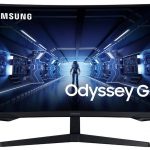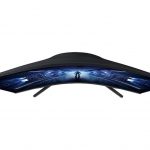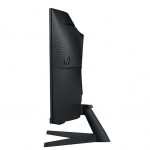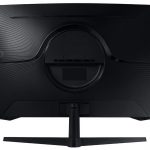Samsung has expanded its portfolio of gaming displays with the addition of two new monitors: the C27G55T and the C32G55T. Both monitors have similar specifications but differ in screen size, with the C27G55T having a 27-inch panel while the C32G55T is equipped with a 32-inch panel. Unlike the Odyssey G7 and G9 series of Samsung gaming monitors, the G5 doesn't use QLED technology.
The Odyssey G5 curved monitors feature a 1000R curvature, providing an immersive gaming experience while also reducing the “eye fatigue zone”. Featuring VA panels boasting a WQHD resolution, 1ms response time, and 144Hz refresh rate, the G5 monitors offer highly detailed and sharp images with lifelike colours and smooth action with less lag and motion blur than standard displays. These monitors are compatible with AMD FreeSync Premium to eliminate tearing, and support HDR10, paving the way for darker blacks and brighter whites in supported content.
The 8-bit VA panels of the G5 monitors have a typical brightness of 250nits, 178°(H)/178°(V) viewing angles, and a contrast ratio of 2500:1. Additionally, they are equipped with Eye Saver Mode and Flicker-Free technology to reduce the user's eye strain, as well as gaming enhancements like Black Equaliser and Low Input Lag Mode.
Available display inputs include 1x DisplayPort 1.2, 1x HDMI 2.0, 1x 3.5mm audio-out jack. The monitor stand is somewhat limited, allowing you to tilt it from -2º to 18º, but there's support for a 75×75 VESA mount if you want better adjustability with a third-party mount.
We are still waiting on pricing and availability details but in the meantime, you can learn more about the C27G55T HERE, and the C32G55T HERE.
Discuss on our Facebook page, HERE.
KitGuru says: Do you like curved monitors? Which Samsung Odyssey G5 monitor would you choose for yourself?
 KitGuru KitGuru.net – Tech News | Hardware News | Hardware Reviews | IOS | Mobile | Gaming | Graphics Cards
KitGuru KitGuru.net – Tech News | Hardware News | Hardware Reviews | IOS | Mobile | Gaming | Graphics Cards








